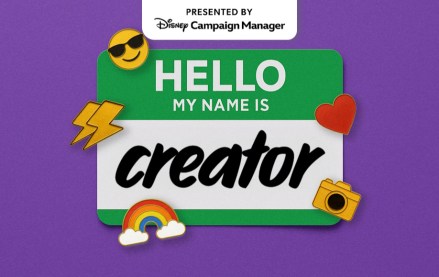Join us Oct. 15-17 in Phoenix to connect with top media buyers

The old question for tech platforms like Google and Yahoo was: Are you a platform or a publisher? For upstart Medium, the answer is clearly both.
The blogging platform, founded by Twitter CEO Ev Williams, continues to blur the line between platform and publisher. While the likes of Condé Nast Traveler and Entertainment Weekly are playing platform, Medium has gone in the opposite direction and built its own internal editorial arm alongside its larger mission of being a platform for user-generated content.
That editorial effort is picking up steam. The site is preparing to launch a new internal sports vertical, The Cauldron, which will be staffed by its own editor and contributed to by roughly 50 freelancers. The vertical will be run in part by sports reporter Andy Glockner, a veteran of ESPN and Sports Illustrated.
The development isn’t entirely new. Medium has long paid a tiny percentage of its contributors. Over 90 percent of the 1,200 stories posted per day come from unpaid writers, who view the site as a way to increase their exposure and influence. This has put Medium in an uneasy position. While the site has become well-known for its simple CMS and clean page design, it has also struggled to balance the freewheeling nature of its platform with reader desires for a more consistent editorial experience. The platform has been home to its share of unfortunate articles from users.
“Unless you have consistently good stuff, people might not have an appetite for it, even if it’s very easy to read,” said Jamie O’Grady, coeditor of The Cauldron.
O’Grady said that the Cauldron’s mission is to give a deeper, more nuanced look at the sports world, which he said is dominated by game recaps and industry gossip. “It will be smart sports content written for smart people,” he said, adding that the ultimate ambition is to make the Cauldron a platform for players and sports executives to share their experiences as well. All of this is very much on-brand for Medium, which has focused its efforts on in-depth thought pieces, not incremental news bites.
But while Medium has spent a lot of time building its platform and editorial arm, it has been relatively silent about its monetization plans, perhaps because it is not sure what those plans are yet. The company has also yet to share traffic numbers, making it difficult to assess how much it’s growing.
“Right now it’s just an experiment,” said Jan Dawson, chief analyst at Jackdaw Research. “They’re not even trying to make money; they’re just trying to make lots of good-looking content.”
Medium’s monetization options aren’t obvious. Its focus on clean design and user experience means that standard display advertising is off the table, and it’s not clear how much tolerance readers will have for sponsored content or native ads from brands.
“There are a lot of websites that have built audiences,” said Dawson, “and when it comes time to monetize, they either fail to do so or do it in a way that turns off the audience.”
Steven Goldberg, managing director at Empirical Media, put it more succinctly: “When a site builds their model as a platform and then adds curation or editorial,” he said, “the question you have to ask is, is their model flawed?”
More in Media

Mitigating ‘Google risk’: The Independent maps four-pillar growth plan for the AI era
The Independent has built its growth strategy around the “blue links risk” and has stopped measuring its success by audience reach.

Advertising Week Briefing: Creators emerge as the industry’s new power brokers
Advertising Week has had creator-focused content tracks in past years, but the rising presence of content creators at this year’s event represents an evolution in how creators are engaging with advertisers, both at industry conferences like Advertising Week and in general.

From walls to frameworks: Publishers and tech giants push weekly talks on AI content use
More than 70 companies gathered for the workshop, roughly half of whom were publishers – a handful from Europe.





